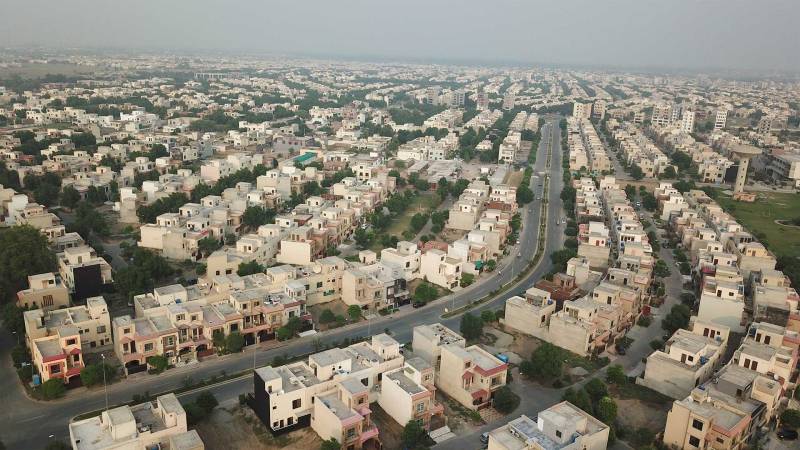
The design of cities says much about the culture of the people inhabiting them. It either facilitates or restrains cultural activities conducted by individuals and groups. Around the world, where the North American model of design is followed, very rarely are spaces built according to the actual needs and desires of the people, but many a times it is a product of uniquely ignorant urban planning.
Many theorists have largely divided the idea of designing cities into two broad classifications: market cities and people cities. The North American model is highly congruent with the arrangements market cities adhere to: wealth creation, job opportunities, and the segregation of communities to support individualism. However, people cities are what many need since they help preserve cultural values, make transportation sustainable, act to cure the issues pertaining to the environment and facilitate governance.
The cities in Pakistan are certainly no exception to being market cities, since all of the major cities are essentially built to be car-centric with little to no walkability. To design a city in this way, where people should have to own a car to participate in society is criminal, to say the least, due to the multitude of problems it poses. This article would, however, specifically focus on the issues due to the decline of usability and availability of public spaces.
Public spaces serve as a common place for community used for commemorations, celebrations, and glorification of community values, but most significantly, they serve as a place to unite society on common values of culture displayed through art, poetry, music, and painting exhibitions. Public squares and public streets, which hold historical significance, once served as a place where active life actually took place. But, with the sprawl of the cities, the idea of displaying the cultural elements in the public squares diminished. It has now been confined to a few enclosed boundaries of historical buildings on certain days of the year, which has put a dent in the overall sense of togetherness in society, especially the symbolism attached to certain places that have specific meanings associated with diverse groups.
Around the world, where the North American model of design is followed, very rarely are spaces built according to the actual needs and desires of the people, but many a times it is a product of uniquely ignorant urban planning.
With the influx of the internet, television, and other media outlets, it has become a new norm to not leave homes for entertainment, let alone for participating in community-based activities. A populace exists that inhabits gated residential communities and visits Cineplex theatres and shopping plazas very often. The entertainment for many has trodden down to nothing but eating out at fancy restaurants. Similarly, voicing opinions using cyber platforms is deemed to be the utmost effort. All in all, cultural dynamics have changed, and the city life supposedly provided by the shared spaces has been reduced to the monopoly of privately owned spaces, offline and online, thus leading to the formation of an elite sub-culture. Undoubtedly, the vitality of urban public places has lessened, but there is a need to revive a common sense of belonging in which public spaces can play a significant part.
The cultural and political dynamics of Pakistan are no doubt sensitive. At one extreme, the few enclosed public spaces that are open to the public have been a potential target of many extremist activities. In response to it, state bodies have erected barriers to entry and installed stringent controls on the use of spaces. Secondly, poor safety of the women in public spaces has discouraged many from merely visiting the public spaces, let alone participating in public meetings, processions, or activities.
The solution to this visible yet invisible problem lies in the proposition put forth by Jane Jacobs seventy years ago. She argued that built spaces must be designed to ensure dense mixed-use and walkability.
A good public space ought to be malleable and give meaning to its users. The size and locale do not matter, but at its best, it must be a shared space for formal and informal group activities by the members of the society. It must serve as a space for the disagreeing groups to express their discontent. Does it sound familiar? We firmly believe no, because in our politico-cultural context, the protests and marches have always been on the roads and intersections, and the cultural activities are primarily conducted by the government on special occasions in enclosed spaces or parks and grounds.
The solution to this visible yet invisible problem lies in the proposition put forth by Jane Jacobs seventy years ago. She argued that built spaces must be designed to ensure dense mixed-use and walkability. A design where the residential, commercial, and institutional buildings are all together is the ideal space to be argued that in its streets, people would be present round the clock.
Not only would it result in populated parks and busy sidewalks, but it would nourish community life as the population would not be segregated. Furthermore, it would enhance public safety by means of informal social control and community policing. It would also enhance social interchange due to an increase in the accessibility of particular segments of society.
For a healthy urban life, remodeling the design of our cities is the need of the hour. This would look like not following the insular culture of laying more asphalt, but building walkable structures. It would allow to make better use of spaces of the already sprawling cities and strengthen community organizations in the public spaces. For that, more spaces must be remodeled into people's cities with more community gardens and walkable roads, where citizen participation could be included in design policy and consciousness of public space elements could be promoted. Remodeling to such an extent might sound arduous, but examples like that of Amsterdam prove its possibility, as well as its potential benefits to society.

